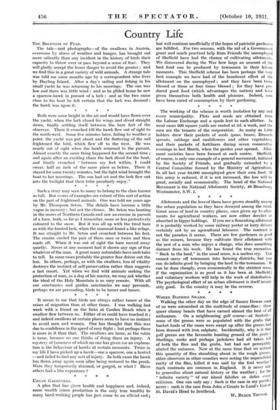Such a story may seen to many to belong to
the class known as tall. But scores of examples are extant of this sort of action on the part of frightened animals. One was told me years ago by Mr. Thompson Seton. The details have become a little vague in memory ; but not the climax. Mr. Seton was hunting in the snows of Northern Canada and saw an ermine in pursuit of a hare, both, so far as I remember, more or less protectively coloured to the snow. But it was all up with the tired hare as with the hunted lark, when the mammal found a like refuge. It ran straight to Mr. Seton and crouched between his feet. The ermine circled the pair of them once or twice and then made off. When it was out of sight the hare moved away quietly. Never at any moment had it shown any sign of fear whateter of the man. A great many naturalists have such tales to tell. In some cases probably the greater fear drives out the less. In others, perhaps, as with the swallows, loss of vitality destroys the instinct of self-preservation rather than suggests a last resort. Yet when we find wild animals seeking the protection of man, as a dog of his master, we may ask whether the ideal of the Holy Mountain is so very remote. With all our sanctuaries and garden sanctuaries we may persuade, perhaps we are persuading, birds to be tamer and tamer.


















































 Previous page
Previous page